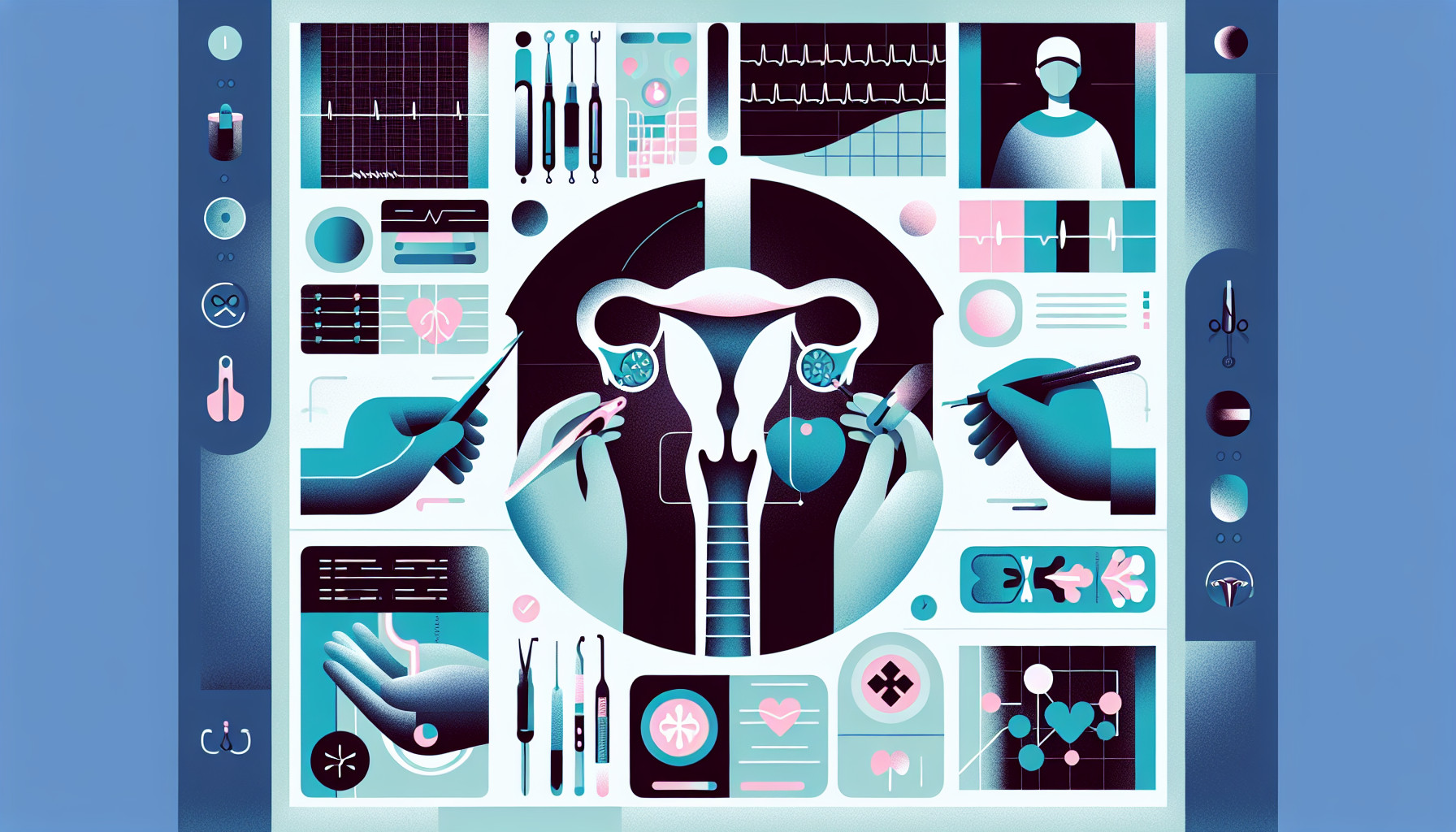Our Summary
This research paper presents a case where a new medical tool, the LiNA OperaScopeTM, was used in a less invasive way to treat a woman suffering from heavy menstrual bleeding complicated by endometrial polyps. The LiNA OperaScopeTM is a smaller, disposable device that allows doctors to look inside the uterus and remove any abnormal growths without having to dilate the cervix first, which is usually required with the traditional instrument.
In this particular case, a 48-year-old woman who had been diagnosed with heavy menstrual bleeding two years prior, underwent a procedure where the doctors removed the polyps using the LiNA OperaScopeTM, then proceeded with a microwave endometrial ablation, a treatment that uses heat to destroy the lining of the uterus to reduce heavy menstrual bleeding. They then checked the uterus again with the LiNA OperaScopeTM to make sure everything was okay. This was all done without needing to dilate her cervix beforehand.
The woman recovered well, being discharged from the hospital only three hours after surgery. A month after the procedure, her menstrual bleeding and pain during menstruation had significantly improved. The study concludes that the LiNA OperaScopeTM can provide a less invasive treatment option for women suffering from heavy menstrual bleeding with abnormal growths in the uterus.
FAQs
- What is the LiNA OperaScopeTM and how is it used in treating heavy menstrual bleeding?
- How does the LiNA OperaScopeTM differ from traditional instruments used in treating endometrial polyps and heavy menstrual bleeding?
- What were the results and recovery time for the woman who underwent treatment with the LiNA OperaScopeTM?
Doctor’s Tip
One helpful tip a doctor might give a patient about endometrial ablation is to discuss all available treatment options with your healthcare provider, including the use of newer, less invasive tools like the LiNA OperaScopeTM. It’s important to have a thorough understanding of the procedure, its potential benefits, and any potential risks or side effects before making a decision. Additionally, make sure to follow all post-operative care instructions provided by your healthcare team to ensure a successful recovery.
Suitable For
Patients who are typically recommended endometrial ablation are those who suffer from heavy menstrual bleeding that has not responded to other treatments such as medication or hormonal therapy. This can include women with conditions such as uterine fibroids, endometrial polyps, or adenomyosis. Endometrial ablation is also often recommended for women who have completed their childbearing and do not wish to have any more children. It is important for patients to discuss their options with their healthcare provider to determine if endometrial ablation is the right treatment for their specific condition.
Timeline
Before the endometrial ablation procedure, the patient likely experienced heavy menstrual bleeding and pain during menstruation for an extended period of time. They may have undergone various tests and evaluations to determine the cause of their symptoms, such as ultrasounds or biopsies. Once a diagnosis of endometrial polyps was made, the patient and their healthcare provider would have discussed treatment options, including medication, hormonal therapy, or surgical procedures such as endometrial ablation.
After the endometrial ablation procedure, the patient experienced a quick recovery, being discharged from the hospital shortly after surgery. In the following weeks, they likely experienced improvements in their menstrual bleeding and pain symptoms. Follow-up appointments with their healthcare provider would have been scheduled to monitor their progress and ensure that the procedure was successful in reducing their symptoms. Overall, the patient’s quality of life may have significantly improved following the endometrial ablation procedure.
What to Ask Your Doctor
- What is endometrial ablation and how does it work to reduce heavy menstrual bleeding?
- What are the potential risks and complications associated with endometrial ablation?
- Is the LiNA OperaScopeTM a suitable option for me based on my medical history and condition?
- How does the LiNA OperaScopeTM differ from traditional instruments used for endometrial ablation?
- What is the recovery process like after undergoing endometrial ablation with the LiNA OperaScopeTM?
- How effective is endometrial ablation in reducing heavy menstrual bleeding in the long term?
- Are there any alternative treatments or procedures that I should consider before deciding on endometrial ablation?
- What specific steps will be involved in the procedure using the LiNA OperaScopeTM?
- How often will I need follow-up appointments after undergoing endometrial ablation?
- Are there any lifestyle changes or precautions I should take after the procedure to ensure optimal results?
Reference
Authors: Kakinuma K, Kakinuma T, Ueyama K, Shinohara T, Okamoto R, Yanagida K, Takeshima N, Ohwada M. Journal: World J Clin Cases. 2023 Dec 26;11(36):8557-8562. doi: 10.12998/wjcc.v11.i36.8557. PMID: 38188210
